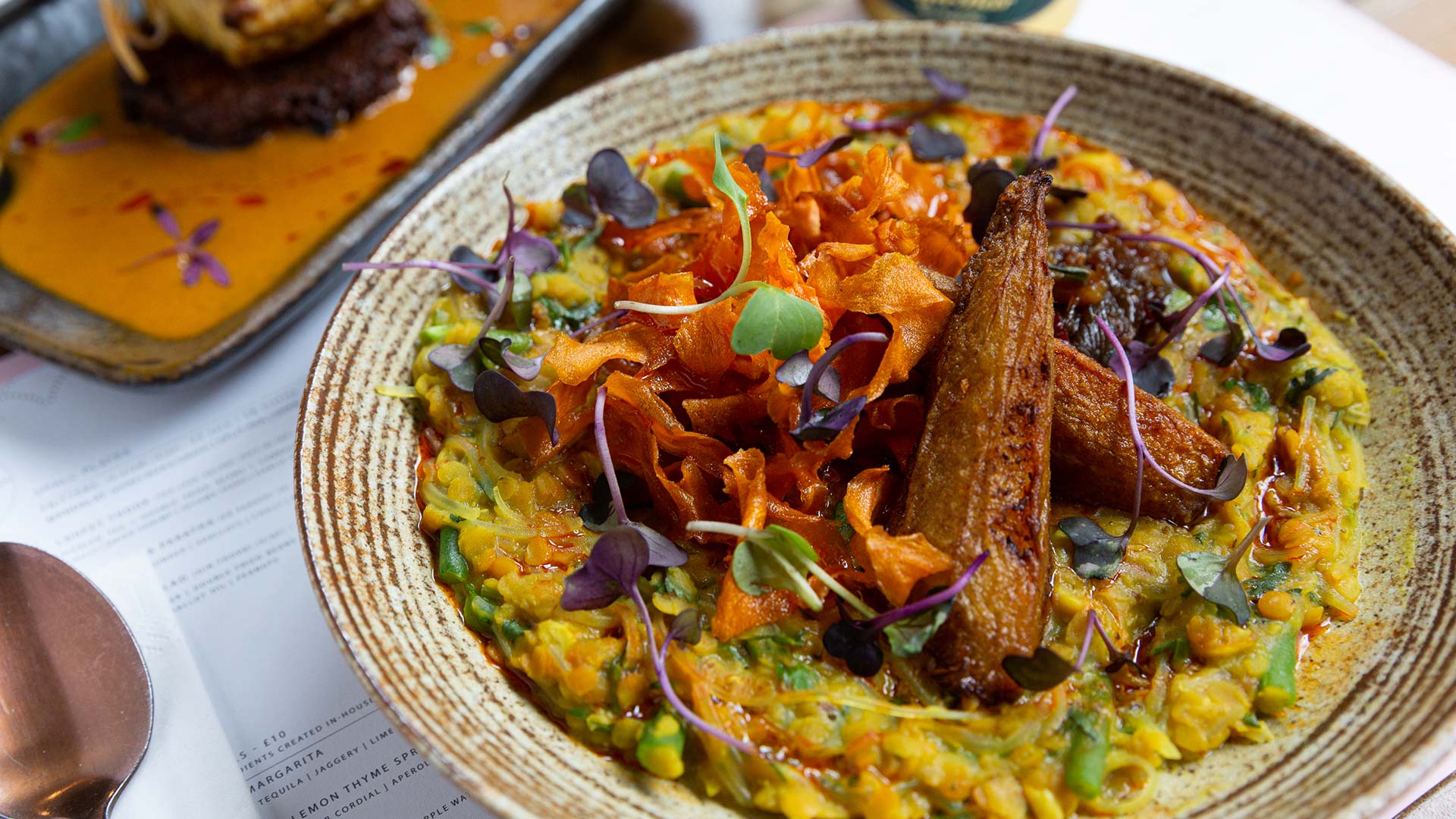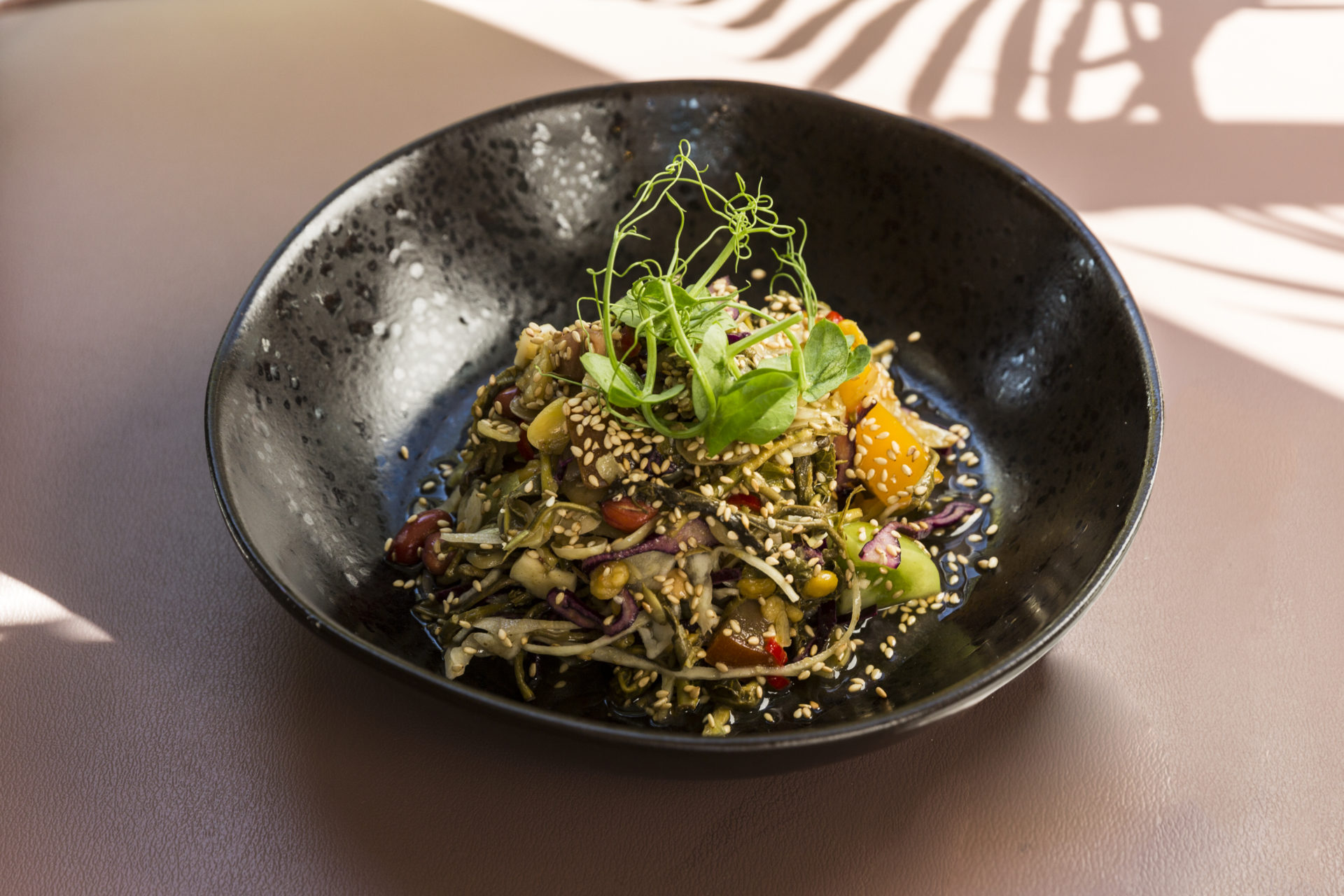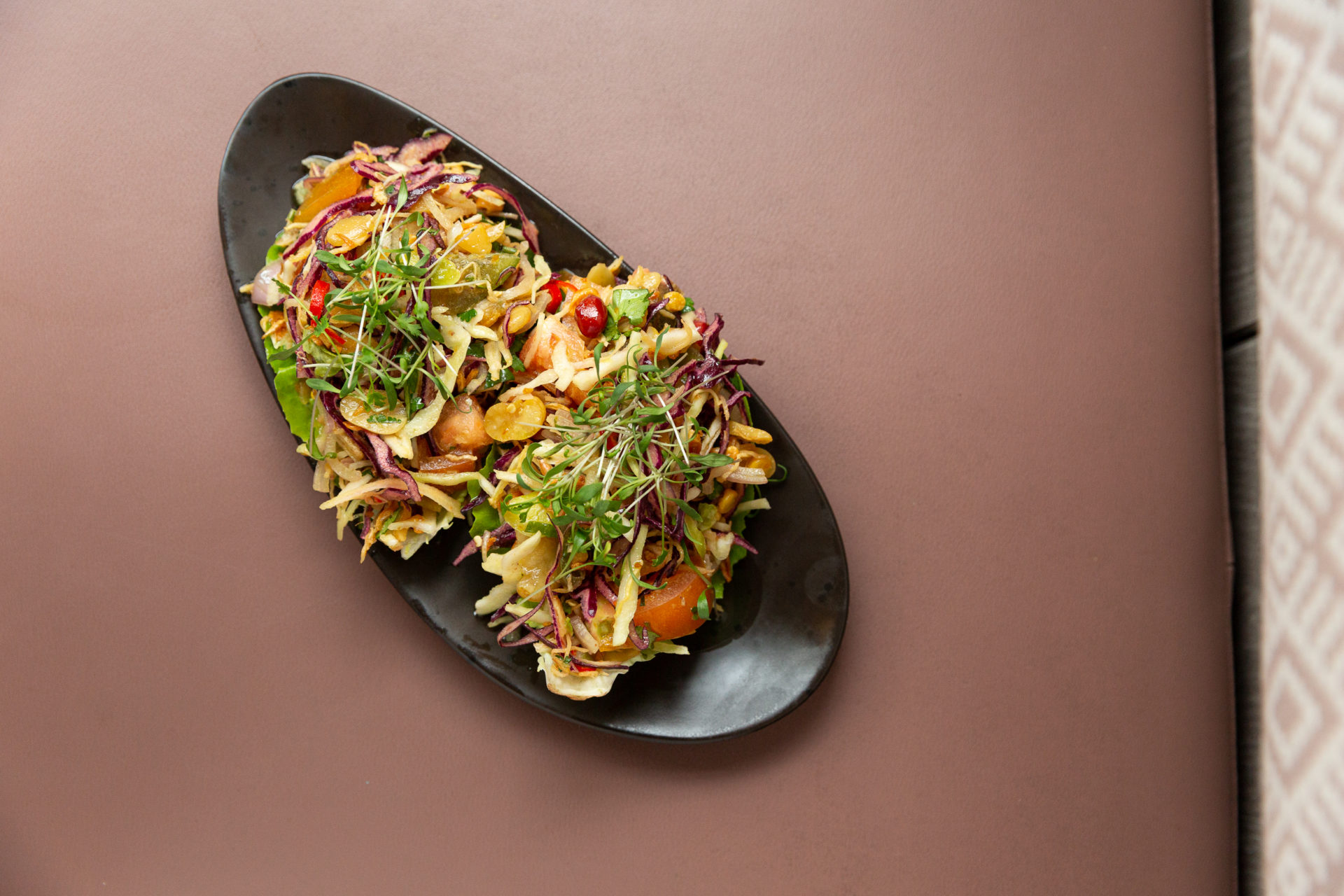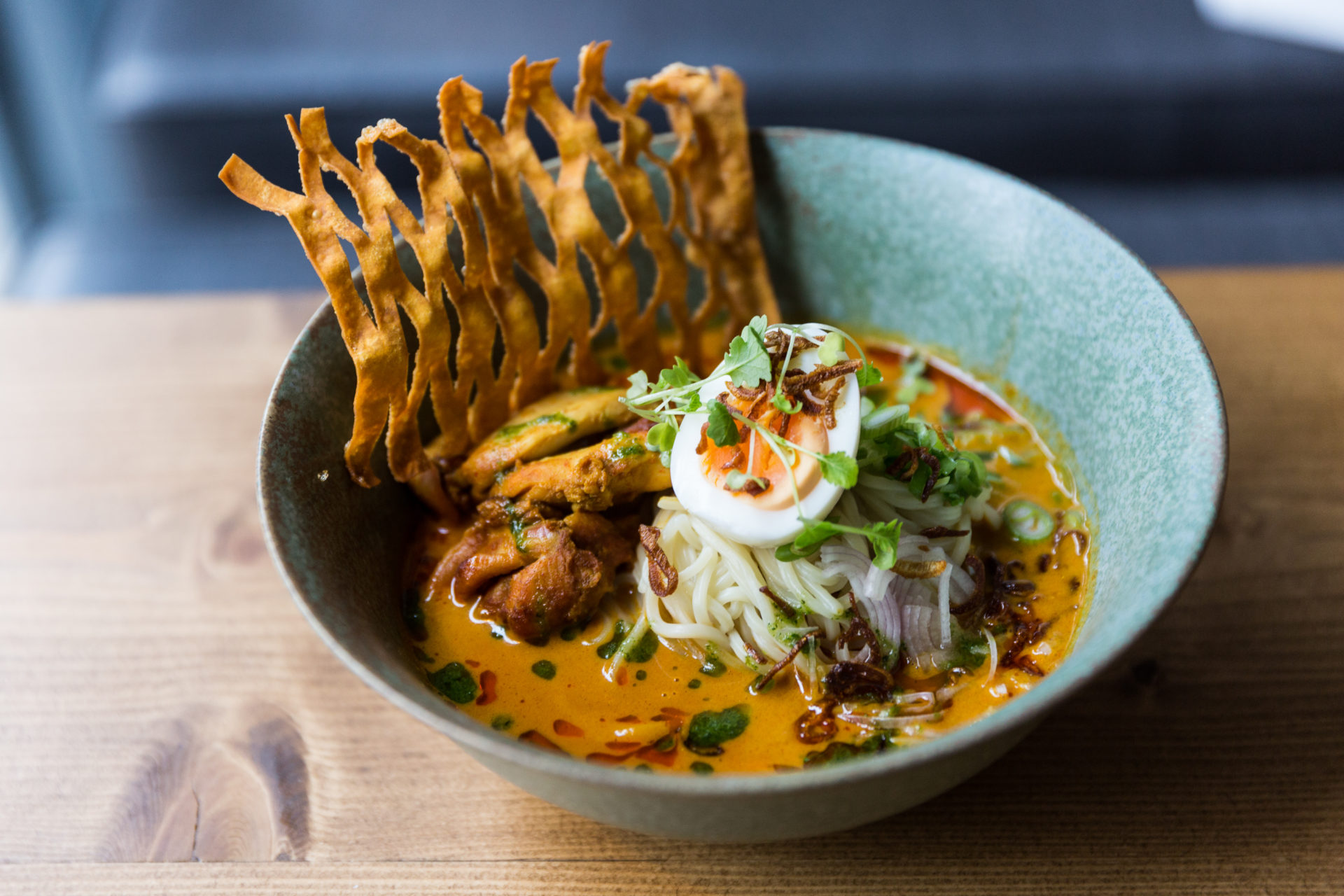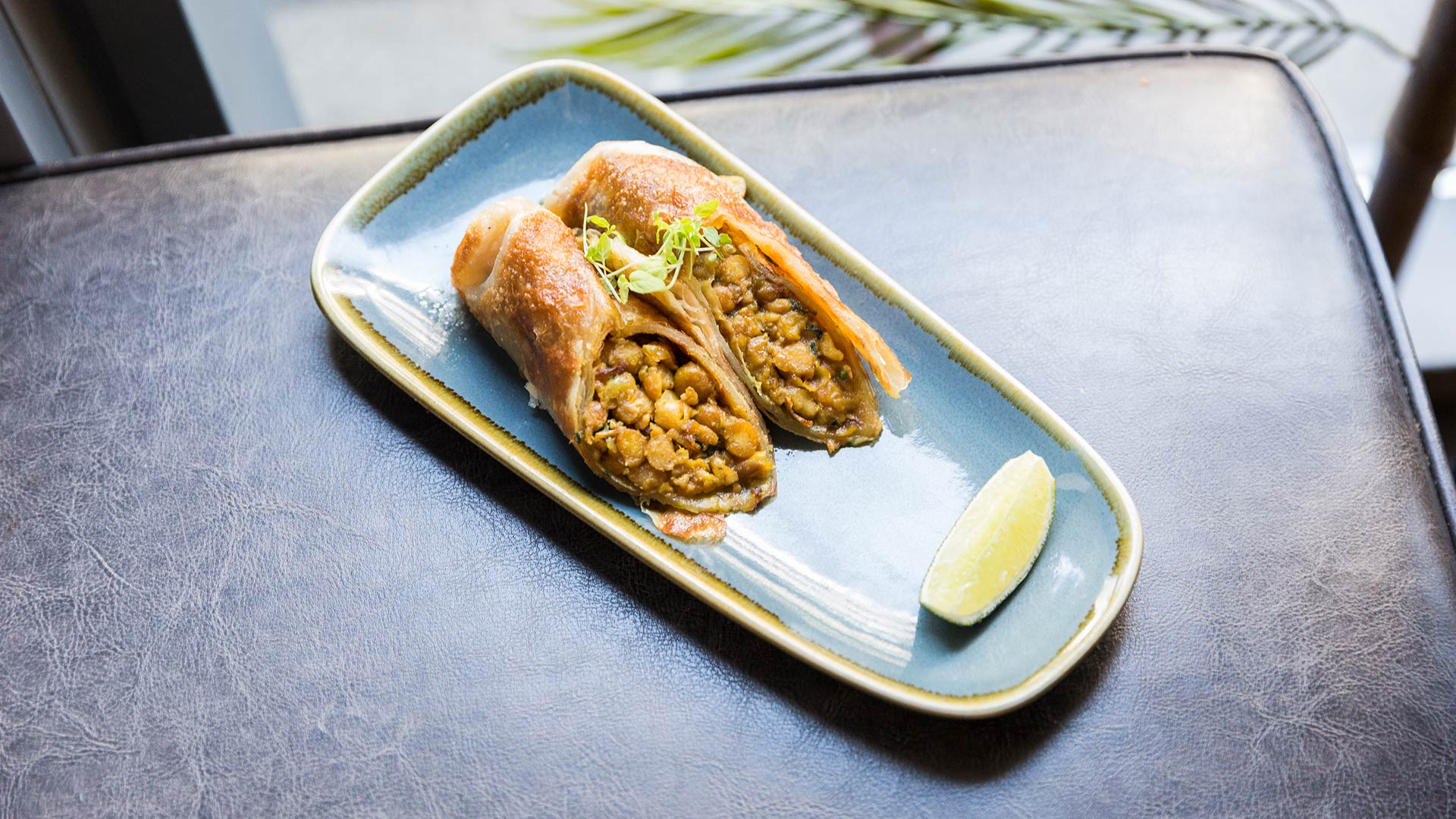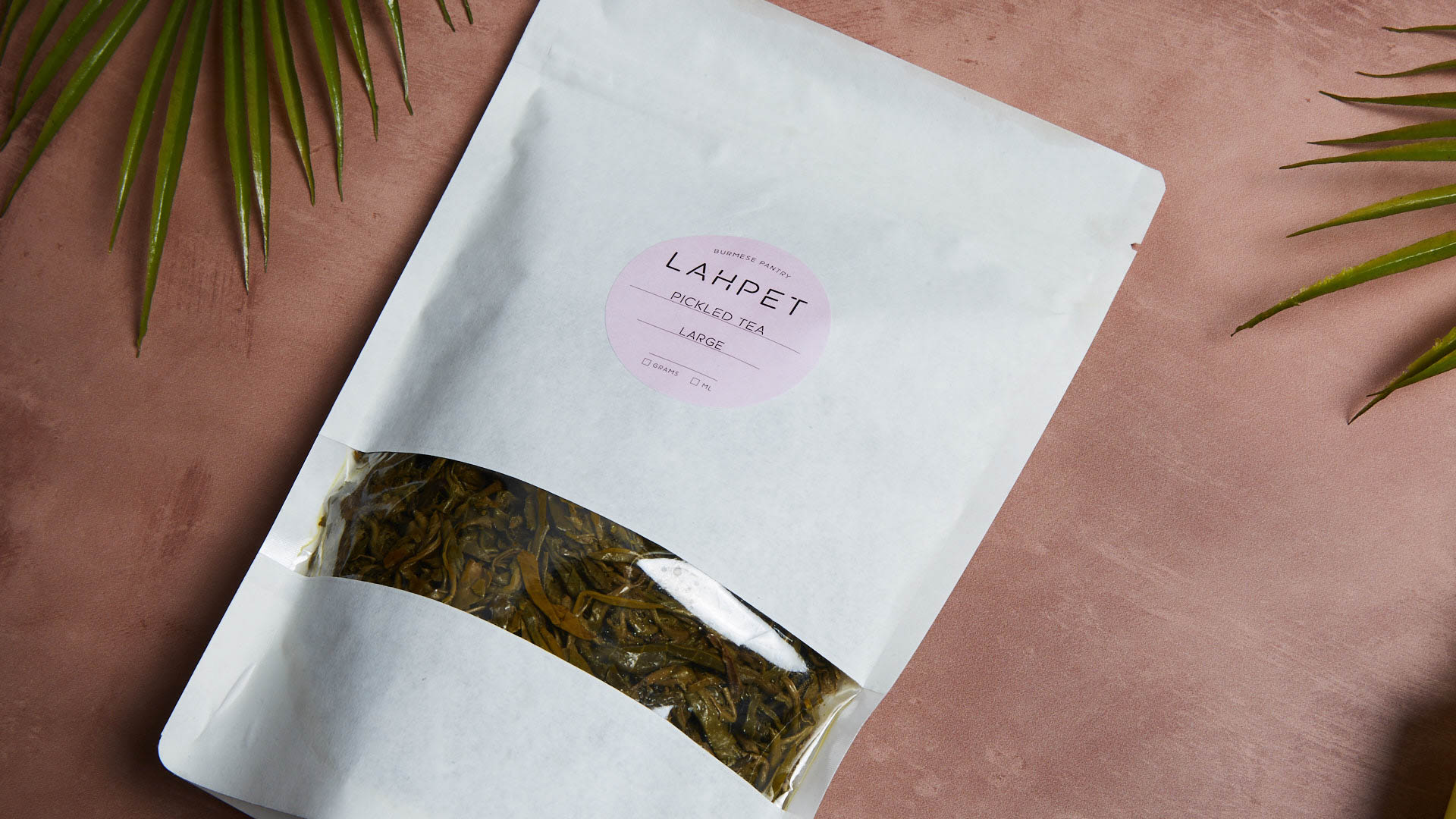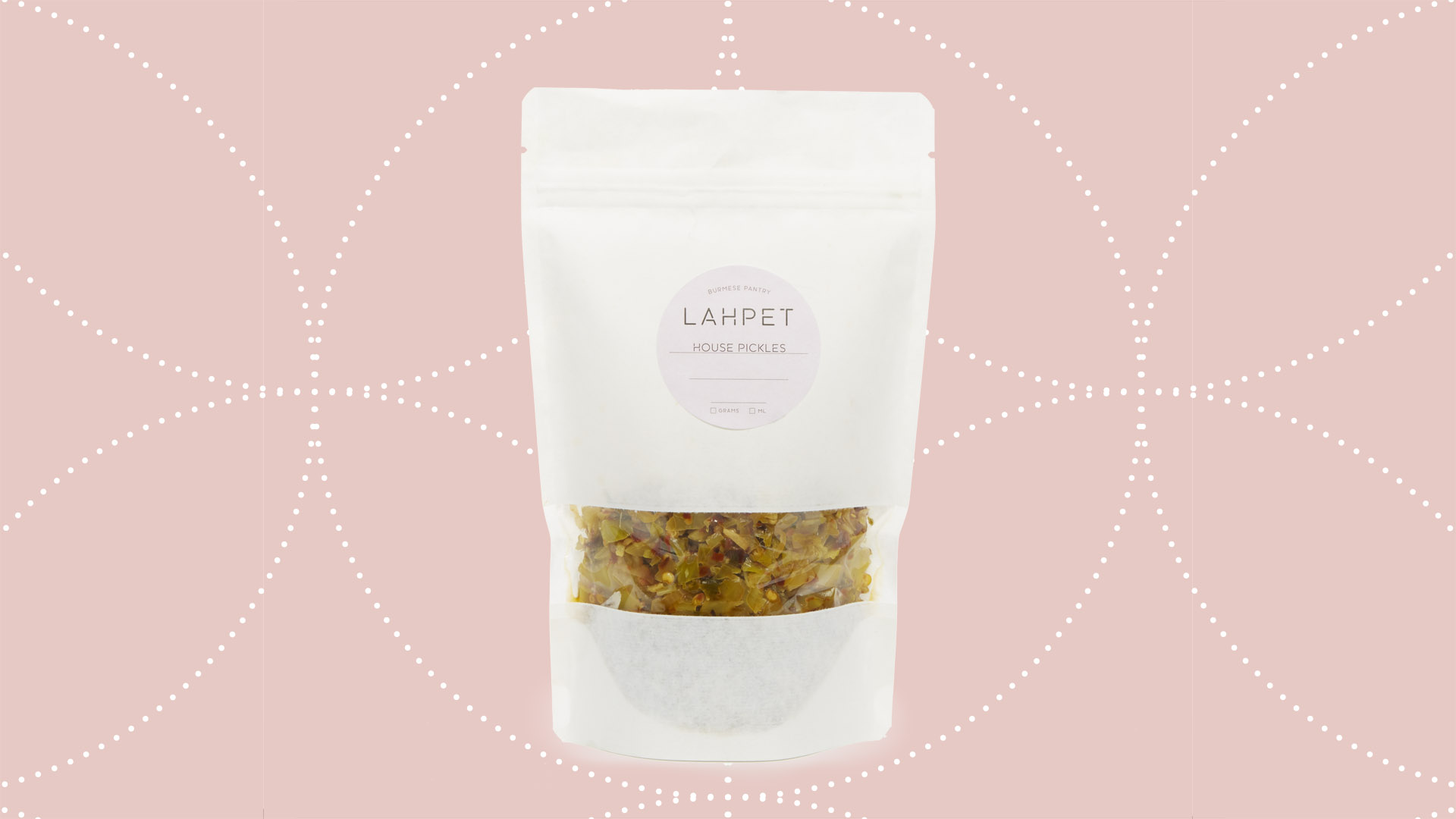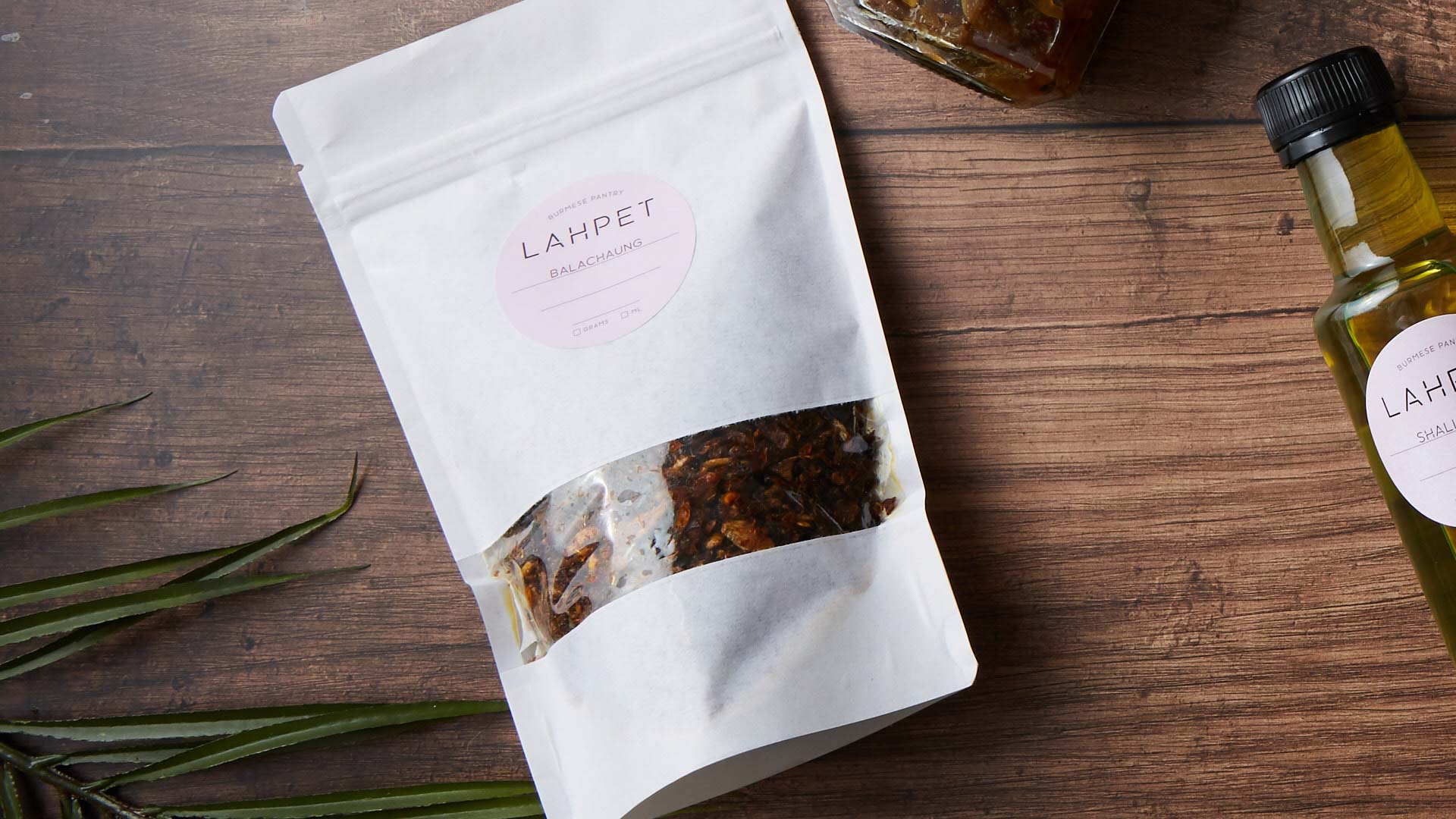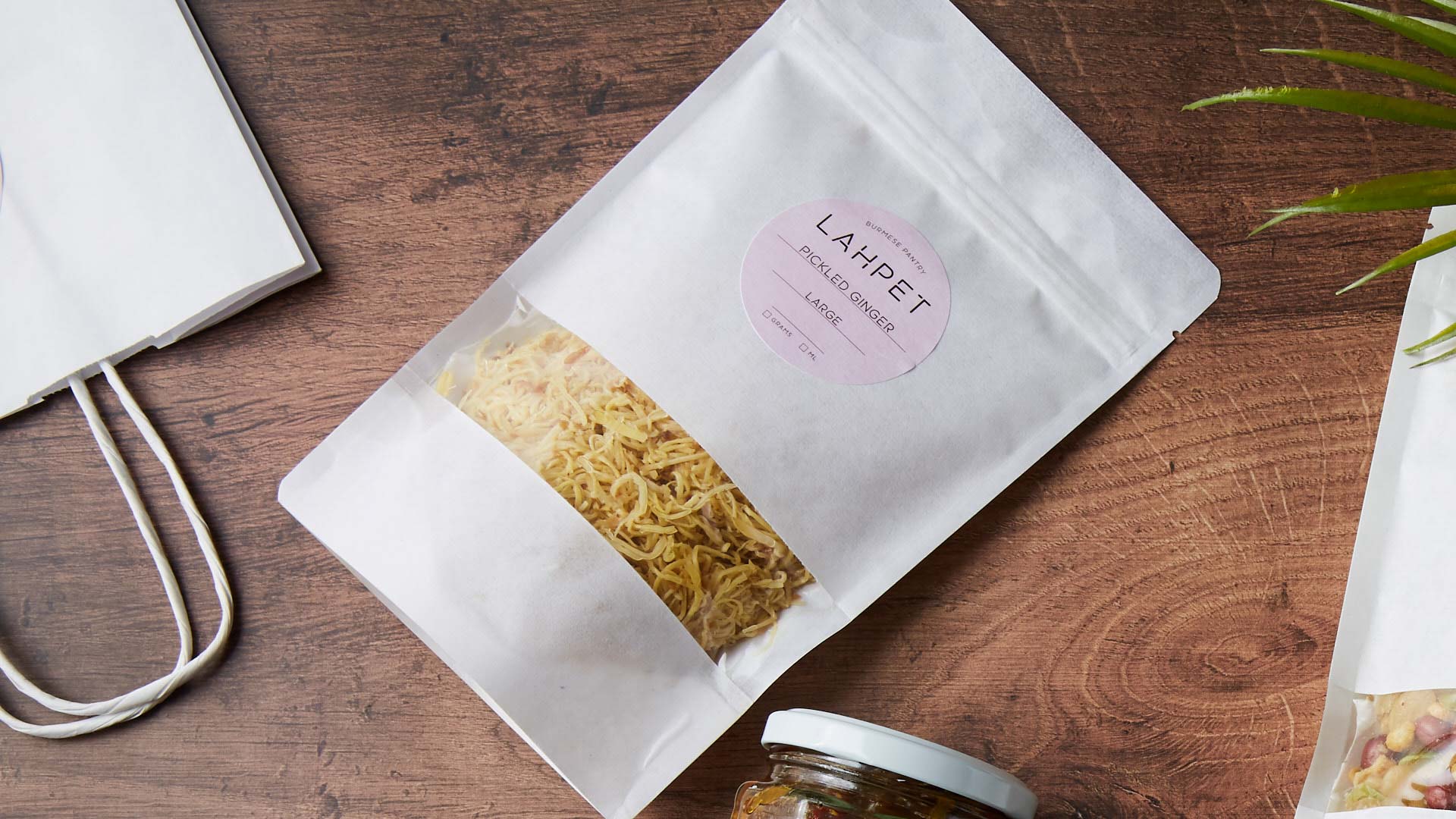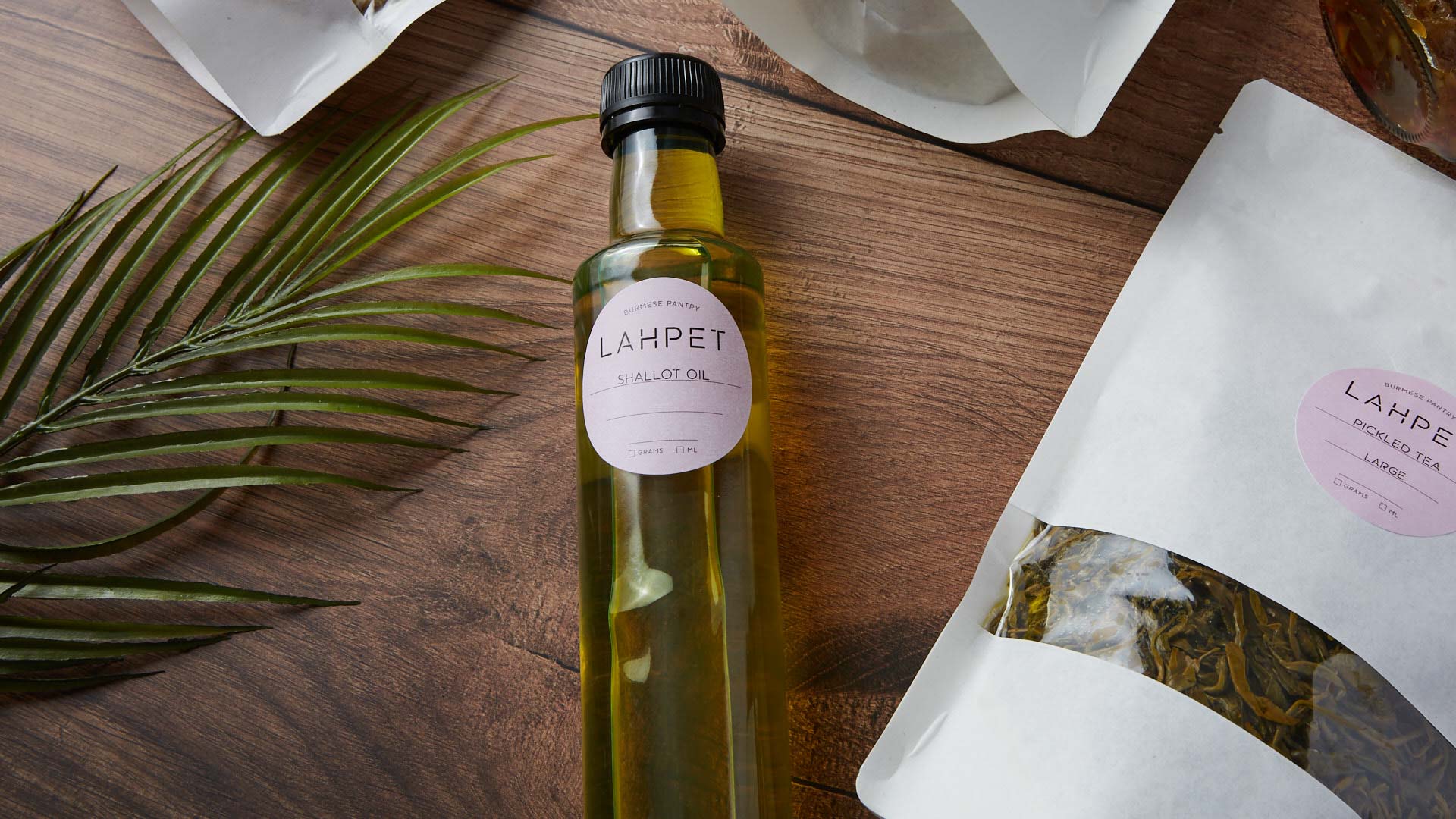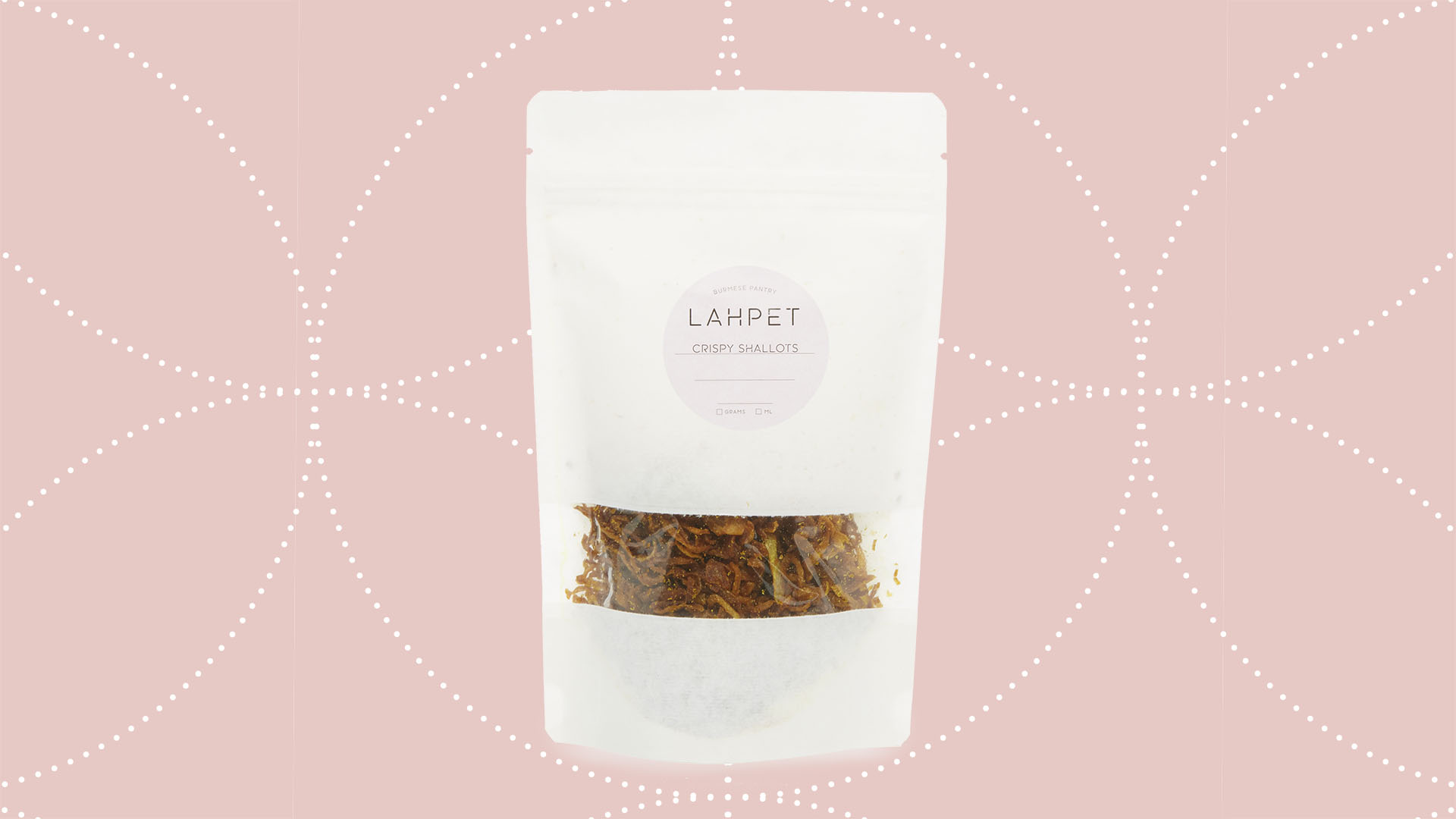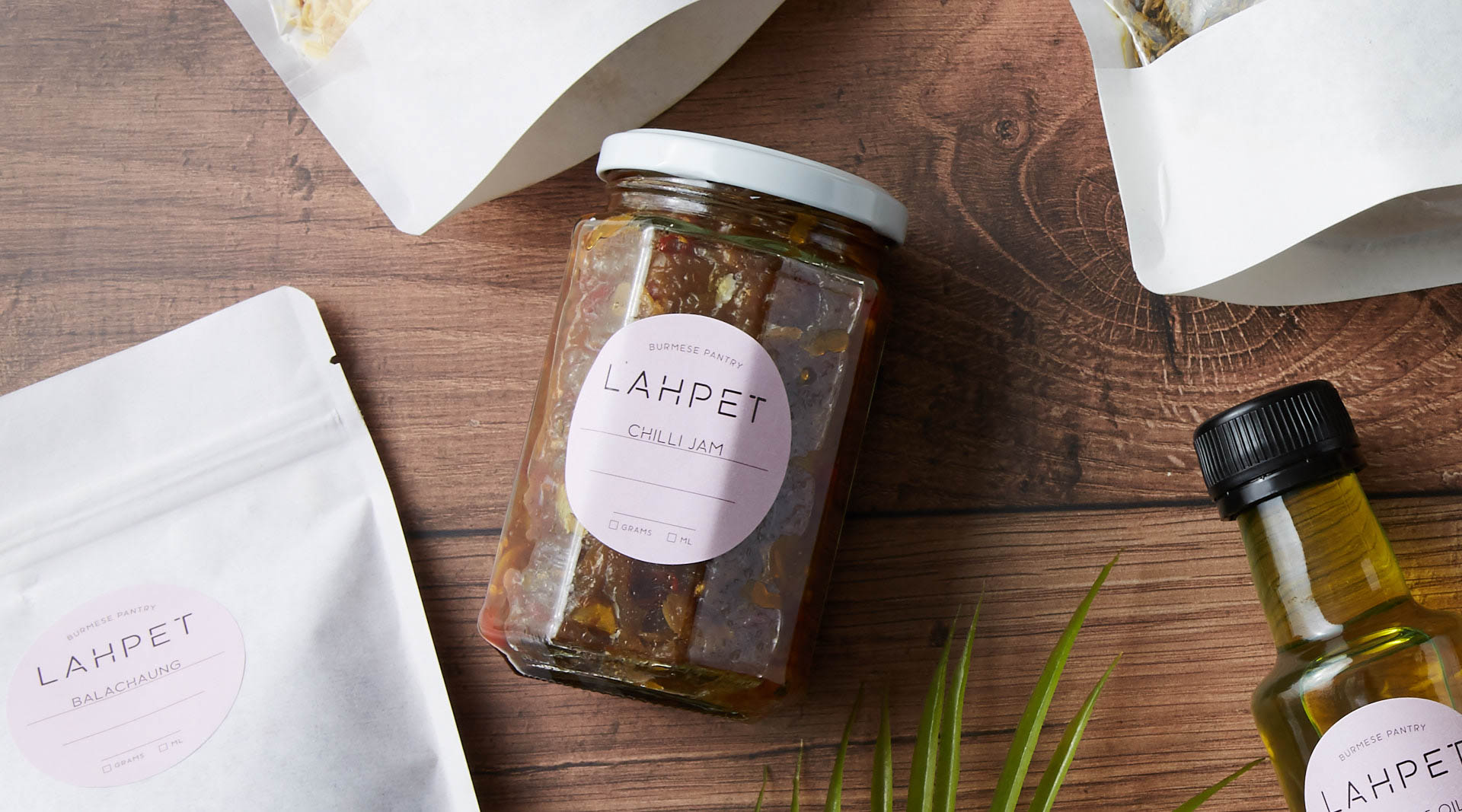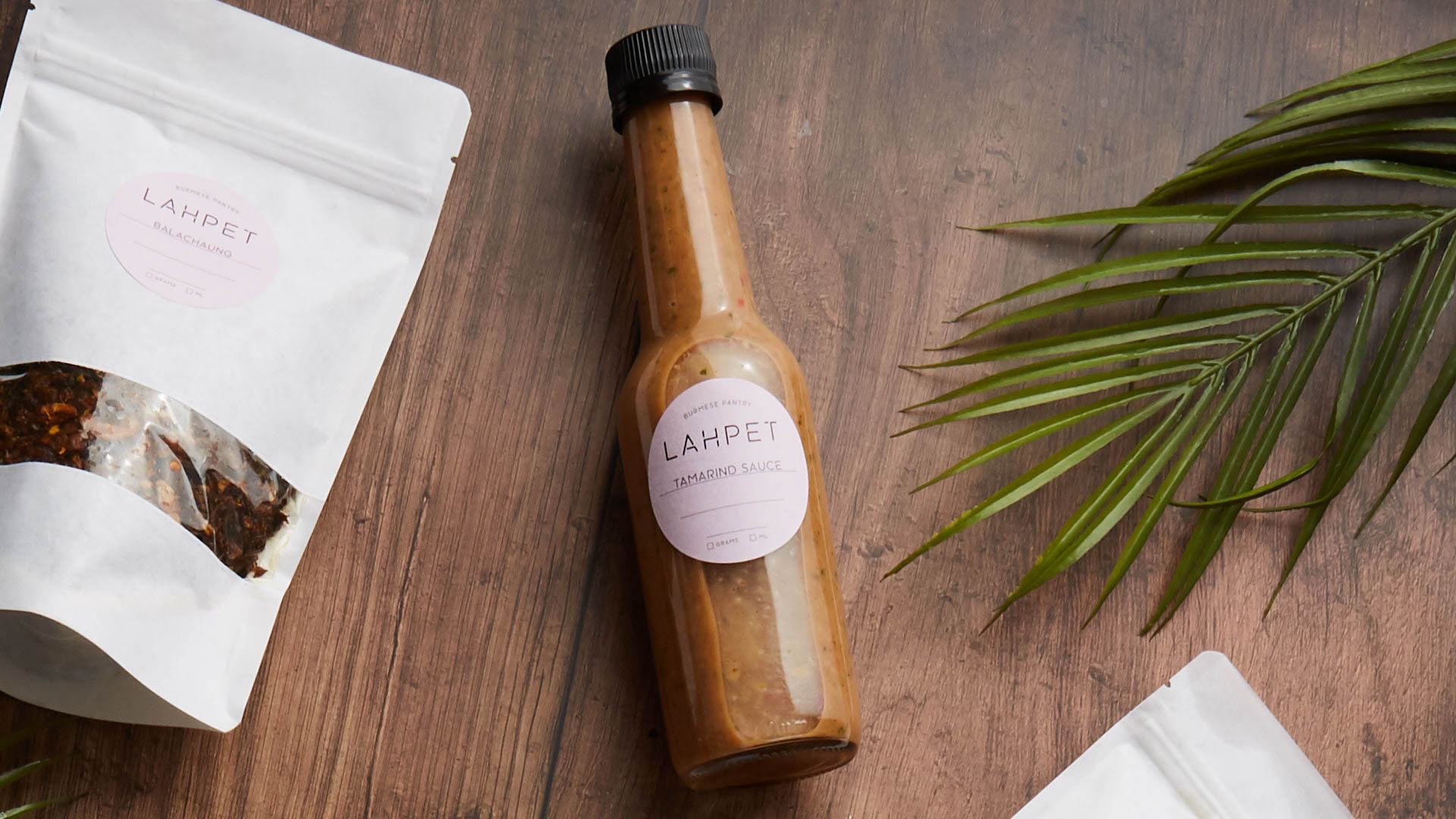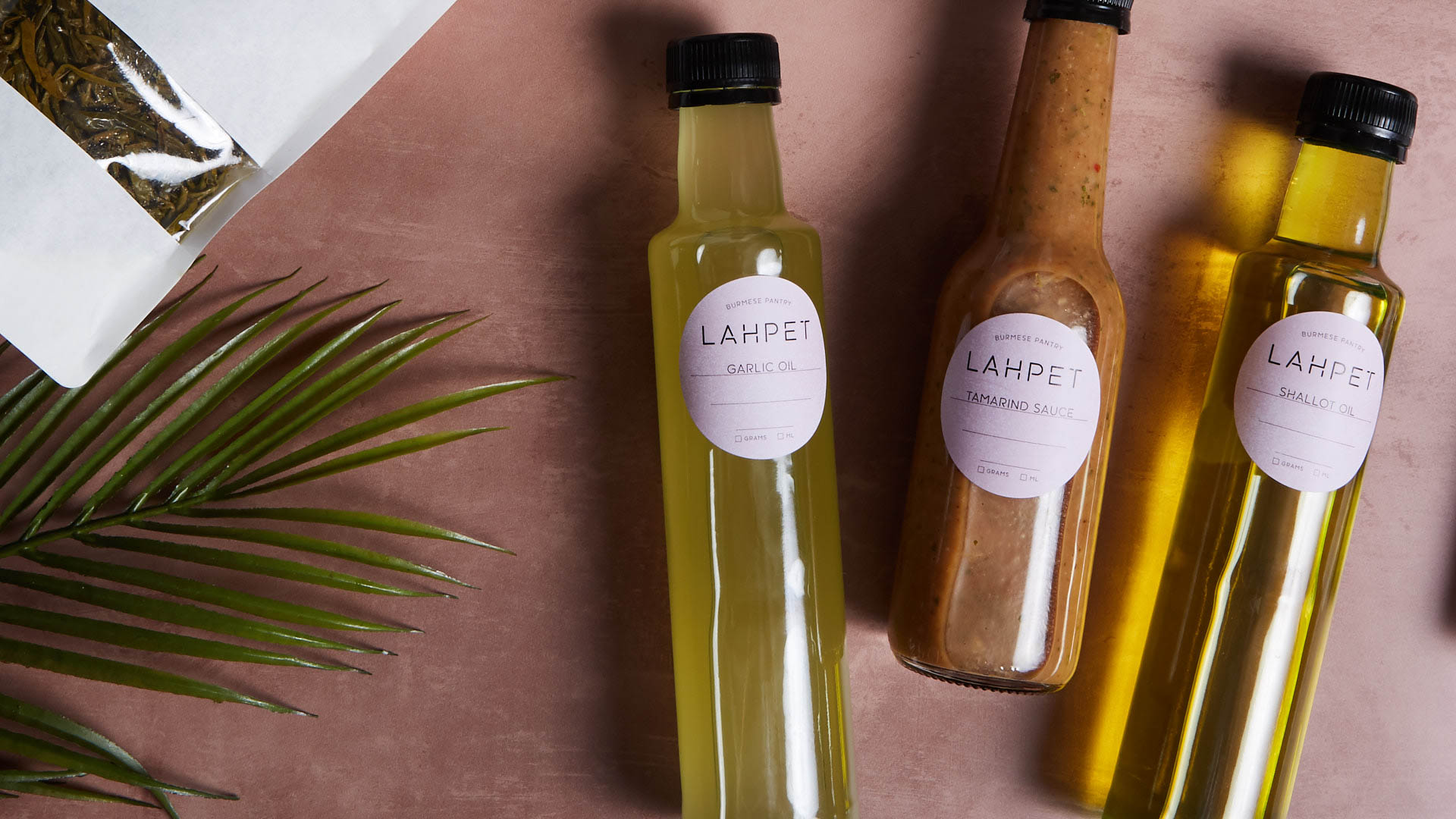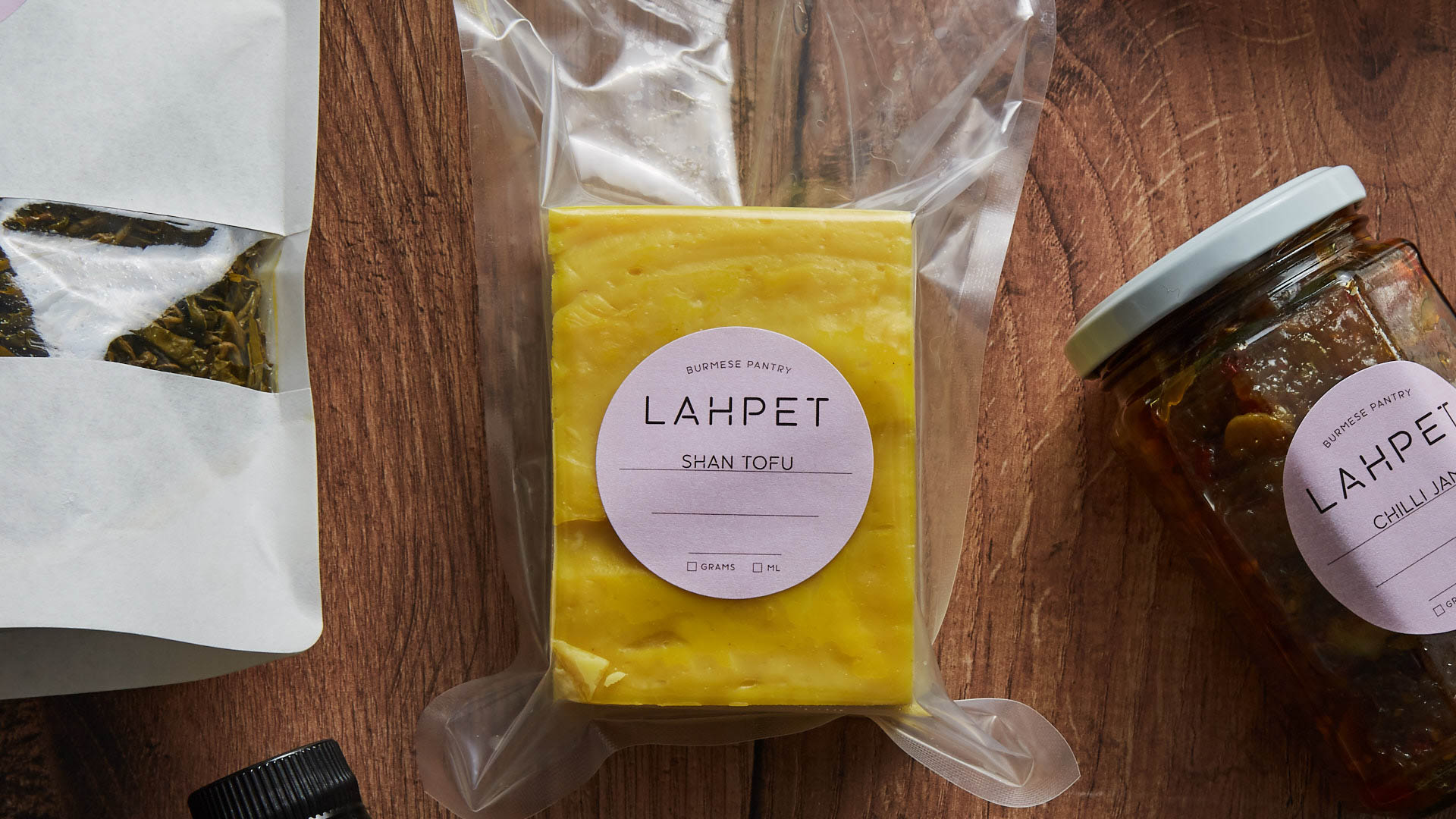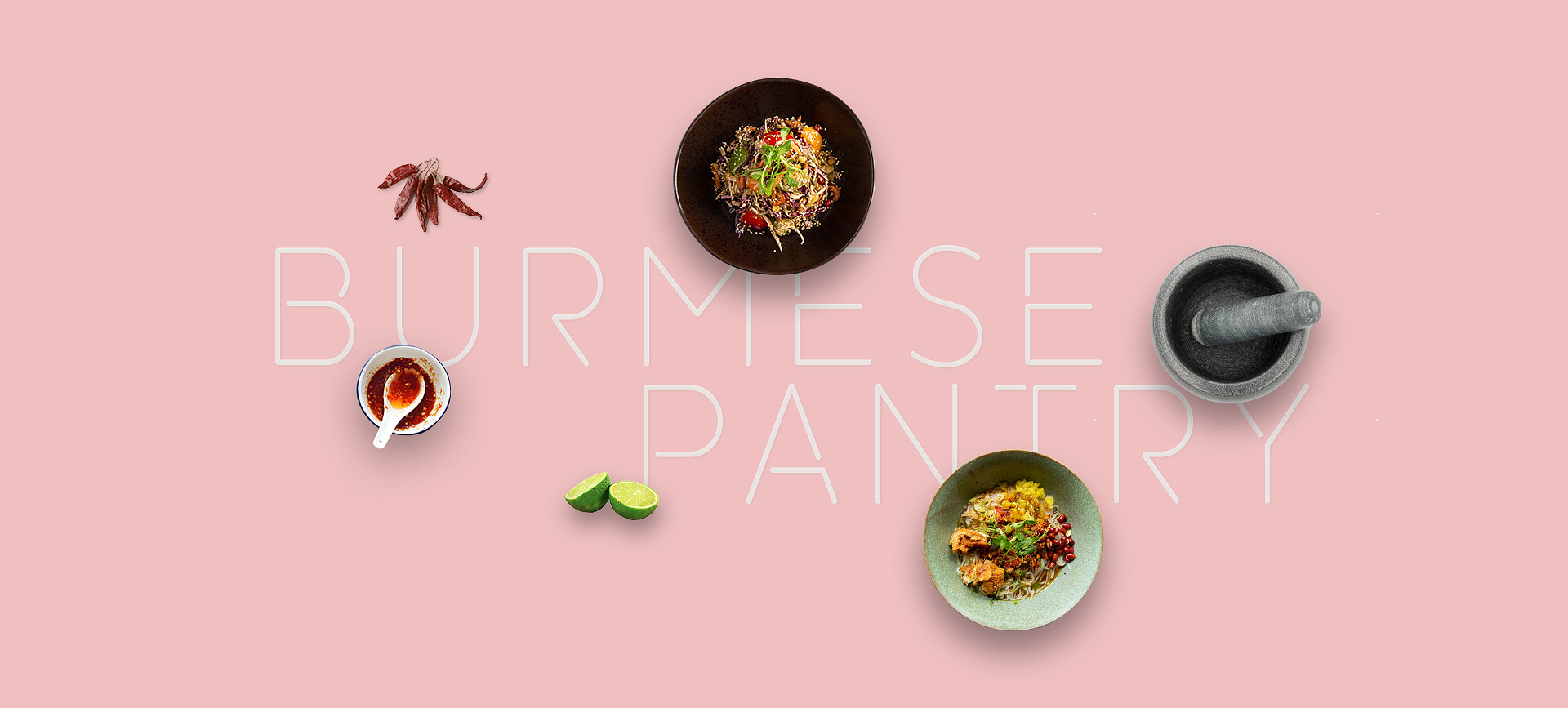
LAHPET BURMESE PANTRY

LENTIL CHOW CHOW (v) (Pae Hin Gurka Thee)
A dish with roots in Myanmar as well as drawing on the part-Nepalese heritage of our head chef. Glass noodles are topped with a lentil curry (much a akin to a dhal) and green beans before being finished with a healthy dollop of chilli jam, sweet potato crisps, paprika oil and roasted chow chow (aka chayote and a member of the gourd family).
TEA LEAF SALAD (Lahpet Thohk)
‘Lahpet’ – meaning tea, and ‘ Thohk’ – meaning salad, and a salad like no other it is. Still so unknown outside of Myanmar - eating your tea as well as drinking it just isn’t the norm in the Western World. We’re trying to change that! This dish hits all the flavour notes and is layered with different textures. Pickled tea provides a unique umami experience, dried shrimp and fish sauce (optional for those vegetarians) adds salt, cabbage and tomato lighten the experience and loosen the salad up and the double fried assorted beans and extra texture and a fried moreishness. Heat comes from birds-eye chilies and lime adds tartness. This salad should be on everyone’s bucket list of ‘to try’ dishes.
Tip - our pickled tea is marinated in oil. Use the Lahpet dressing supplied sparingly until you find the desired consistency.
Watch how to make your kit:
GINGER SALAD (Gin Thohk)
Not all that dissimilar from tea leaf salad in texture but wholly different in taste – young ginger is pickled and shredded to make this salad. The ginger is fresh and fiery with sour undertones. We add coriander, fresh and fried shallots and double fried beans for extra flavour and texture. Chilli, a squeeze of lime and some toasted chickpea which adds a creaminess to the salad finish the dish off.
Tip – serving and devouring in baby gem lettuce cups is fun. Some have been known to serve in soft warm tacos, but we won’t comment further on that.
COCONUT NOODLES WITH CHICKEN (Ohn-no Kauk Swè)
A real crowd pleaser, this unctuous bowl of coconut broth, braised chicken thigh and egg or wheat noodles is most popular amongst those new to Burmese cuisine. Fish sauce adds salt, coconut – sweetness, and lime, sourness. The shallot, boiled egg and crispy noodle garnishes add further freshness and texture.
Tip: Marinade your chicken in a teaspoon of paprika, turmeric and a dash of fish sauce (or salt) for 30 minutes before frying – if you have them to hand.
Paratha & Yellow Peas
Our house paratha, fluffy on the inside flaky on the outside; served with braised yellow peas, lime and coriander. Dip, wrap or fold yours for a great start to your Burmese feast.
Tip - adjust the viscosity of your yellow peas by adding a little water when heating through. If you like to dip, add more water, if you want to wrap or fold your paratha keep the mixture thick.

Pickled Tea (Lahpet)
The best of the tea harvest is kept for pickling in Myanmar and although modern processes are now abundant, more traditional methods steamed the tea leaves before packing them into bamboo vats or clay pots and burying them in pits under weights to encourage natural fermentation. Lahpet is either served as a pre-mixed salad, in a compartmentalised (often ornate) tray to mix your own salad to preference or simply mixed with plain rice.
House Pickles
Made with mustard greens, shallots, lots of garlic and chilli and a touch of sugar. Great as a side to a hearty meat or fish curry or stew, also with salads and noodle dishes. Recipe ideas coming soon.
Double Fried Beans
Butter beans, broad beans, split peas, chana dhal, garlic and red peanuts are double fried to create this moreish myriad of pulses and nuts. Unique to Myanmar and widely used in salads. We recommend being creative with this product and adding to any salad or room temperature/chilled dish you feel might need added texture, or simply enjoying it as a snack.
Balachaung
A very Burmese condiment and present on most dining tables, consisting of dried shrimps, garlic, shallots dried chilli, fish sauce and paprika - lightly fried and then pound into paste of differing consistencies. Some prefer it moist but ours is dryer and quite crunchy. It’s goes fantastically with rice and Burmese curries - adding a punchy aroma, flavour kick and layer of texture. Best suited to those with a bolder palette!
Pickled Ginger
Pickled in a similar fashion to that of Lahpet using young pink ginger. This ingredient is widely used in salads in Myanmar but can be utilised in a number of other ways to add a mildly fiery acidic touch to other dishes such as steamed fish and vegetables. At Lahpet we stuff and steam whole fish with pickled ginger, garlic, chilli and finely sliced limes. Recipe coming soon.
Shallot Oil
Almost impossible to come across unless you make it at home – this delicious oil adds umami to any dish you care to drizzle it over. It works so well on salads and with grilled meat and fish. For a truly Burmese experience simply mix with lime and a dash of fish sauce and wait for the aroma to hit you. Then drizzle over your salad, or even better noodle salad, for a true taste of Myanmar.
Crispy Shallots
Unlike any off-the-shelf fried shallots you might be able to find – ours are house-made and maintain an earthy sweetness and wonderful crunch. Sprinkle on salads, curries, noodles and rice to add an extra flavour dimension and layer of texture.
Chilli Jam
Balanced with a sweet, tart, chilli kick. Spoon over rice and grilled meats, add a dollop to your dhal or slather over an egg filled parata or naan - this jam has so many applications we’d be here all day listing them all.
Tamarind Sauce
Sour and slightly sweet with plenty of chilli oomph. Excellent with our Shan tofu when fried or any crunchy snack or crudité.
Garlic Oil
Also underused we feel, our garlic oil is such a versatile product, use it creatively and unsparingly on a range of different dishes.
Shan Tofu (Tohu)
Unique to Myanmar and not like any tofu you’ve had before. Shan tofu, which we produce in-house with rendered split peas which form a silky-smooth liquid which sets overnight, can be eaten off the block in salads or sliced and fried. When fried it forms a crunchy coating whilst remaining soft and smooth within. In salads it’s often mixed with fresh and fried shallots, cabbage, coriander and finished with a tamarind-based dressing. Recipe coming soon.

